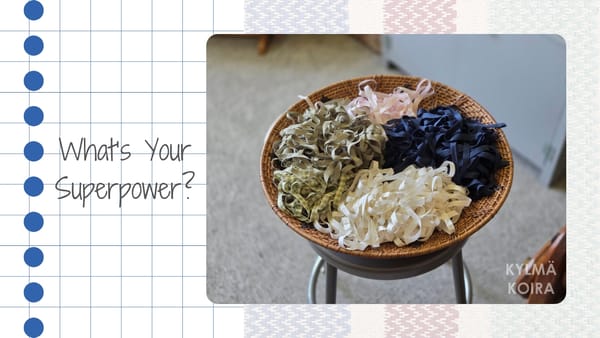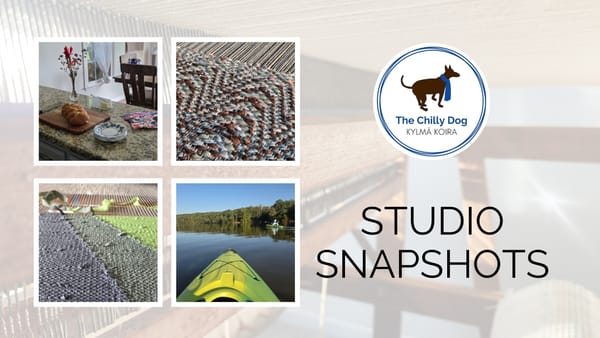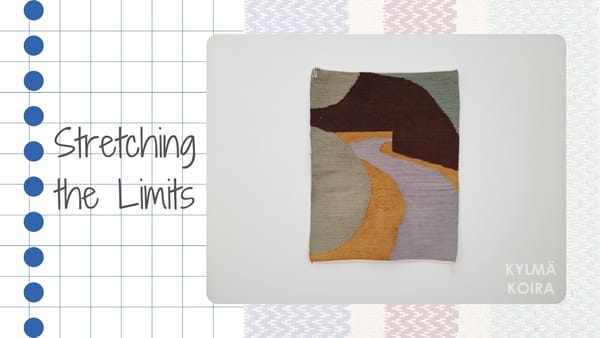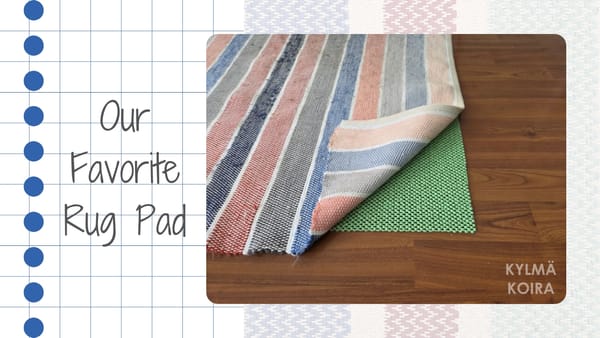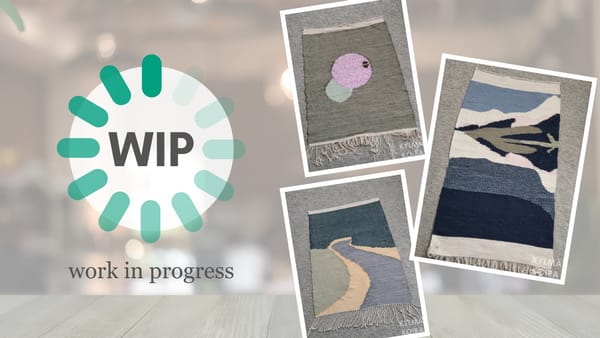
If there's one thing I could tell every new knitter, weaver and crafter, it would be that some projects end up being done for the sake of learning and will never become a beautiful or even usable finished project.
Whether you are a new or experienced craftsperson, some projects never need to be completed and can simply be learning experiences.
Three of the "scrap-estry" rag rugs I've pulled off the loom this year are exactly that, learning experiences. Before I reclaimed as much material as possible for re-use, I took a few remembrance photos to document what each project taught me.
Project #1 - The Thistle Rug
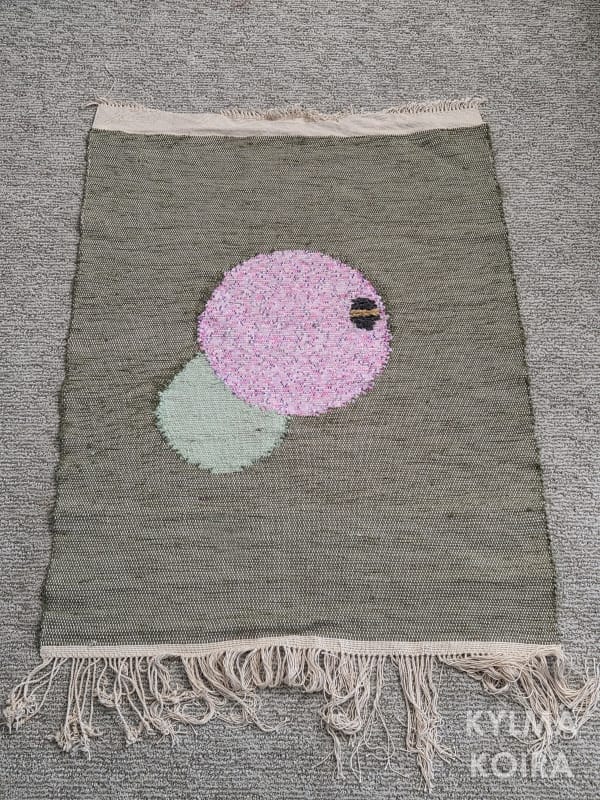
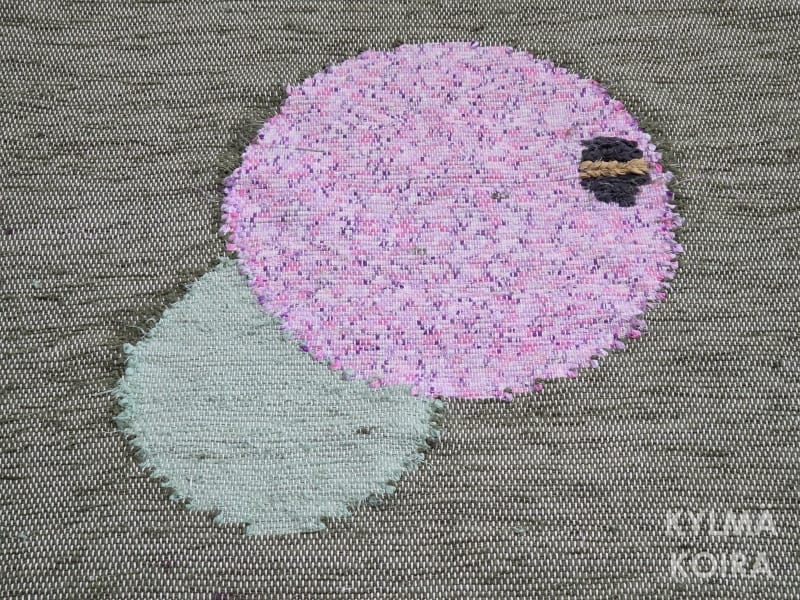
Some version of this piece has been on and off my loom a handful of times and I'm just not satisfied.
Lessons Learned
- The sett, or spacing, of the warp threads is too close. Not only does this make the rug feel rather limp, it also mutes the colors.
- Using a washable marker do draw on the warp makes it easier to weave shapes like circles.
- I'm getting better at clasping the weft at the color changes, but there are still gaps in a couple places and the clasps look a little rough.
- Stitching over the top of a finished piece can create interesting dimensionality.
- Pairing a woven edge with twisted fringe is not an efficient use of time or materials.
- Using rug warp to weave the top hem will not yield a sturdy hanging pocket.
Project #2 - The Forest Trail Rug
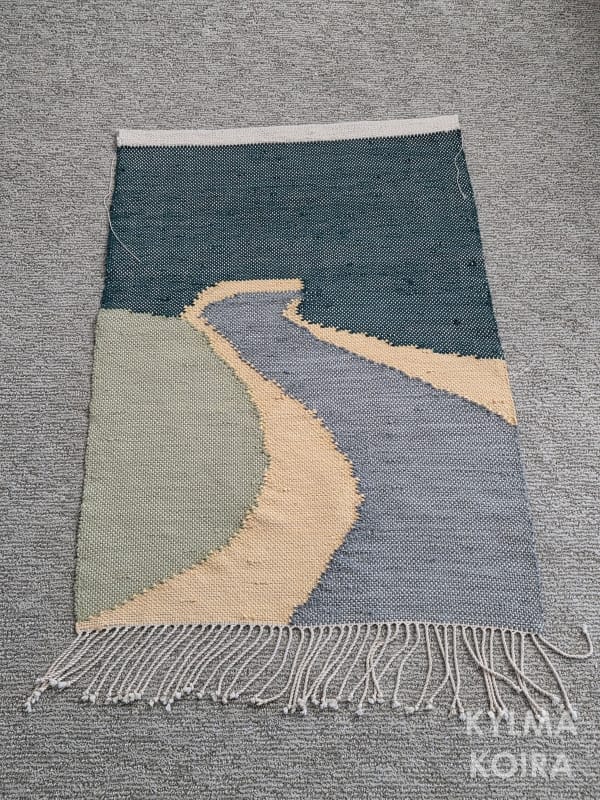
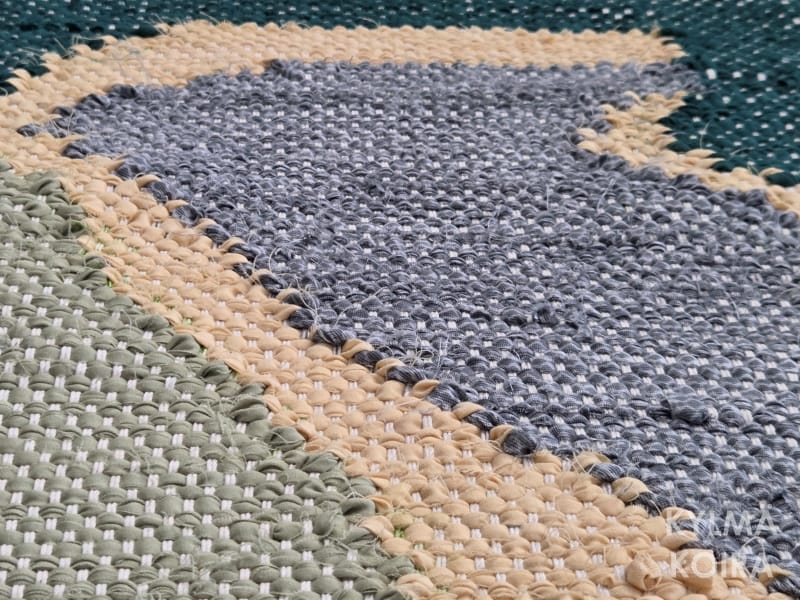
I love the overall concept of this piece, but something is not quite right.
Lessons Learned
- Spacing out the sett from 12 ends per inch to 6 double ends per inch improves the rigidity of the fabric and makes the colors stand out better.
- Using thin fabric strips for the top hem improves the hanging pocket strength of the hanging pocket, but also adds unflattering bulk.
- Weaving from the top of the image to the bottom straightens up the hem so the piece will hang level.
- The clasped wefts on the side of the working side of the weaving look bumpy and uneven. As you're tapestry weaving you should be looking at the wrong side of the project, not the right side.
- Using 1-2 rows of twining holds the weft in place when the rug is removed from the loom and pairs nicely with a twisted fringe.
Project #3 - The Glacier Bay Rug
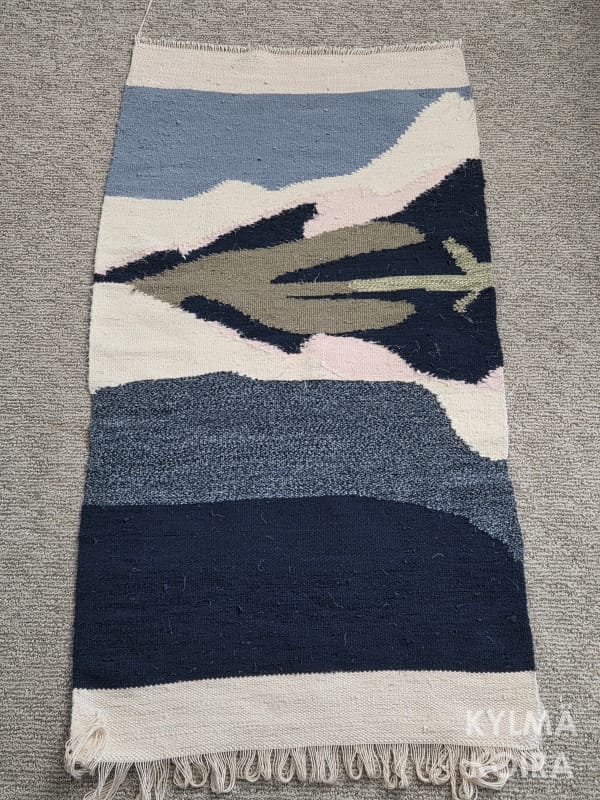
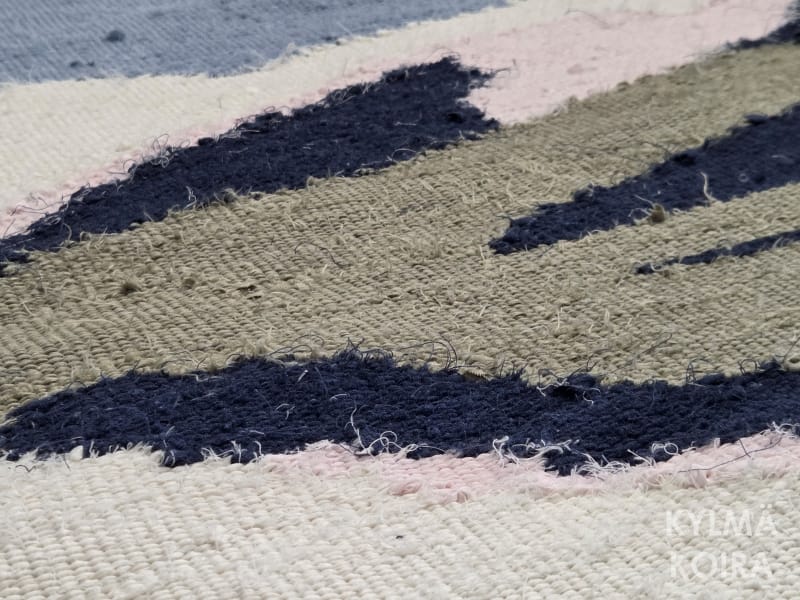
Too abstract to be realistic, yet too realistic to be abstract.
Lessons Learned
- Setting the warp at 6 ends per inch and using thinner, 3/8-inch fabric strips creates a very dense, weft-faced fabric so the colors are highly visible.
- Moving all colors in the same direction in each shed and clasping every other shed makes more sense in complex designs than the meet and separate method.
- With the denser fabric, there's no need for a pocket on the bottom for a weighted rod.
- When cutting the thinner strips of fabric on either the lengthwise or crosswise grain makes the fabric edges become very shaggy while weaving.
So, lessons have been learned and materials reclaimed as I head back to the loom with new insights and ideas about how to do what I do.
Join the conversation
